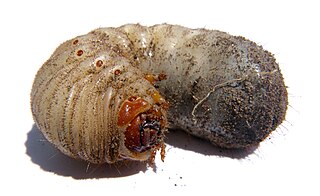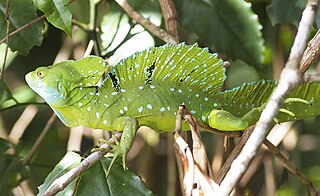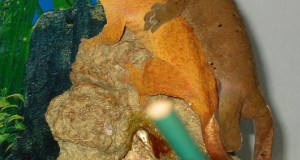From tiny Day Geckos to stout Water Dragons and lumbering Savanna Monitors, many popularly-kept lizards feed primarily upon live foods including insects and other invertebrates. The most important point for insectivorous lizard owners to remember (and one that my regular readers are sick of seeing!), is that crickets and mealworms alone, even if powdered with supplements, are not an adequate diet for any species. Dietary variety is essential. Fortunately, with a bit of planning, we can collect, breed or purchase a huge array of nutritious invertebrates for the lizards in our collections.
From specialists such as Horned and Caiman Lizards to Tokay Geckos and other generalists, the needs of individual species vary greatly. Please post below for specific information on the lizards in your collection.
Wild Caught Insects
I firmly believe that reptile keepers should place much more emphasis on collecting insects and other invertebrates. While caution concerning pesticides and toxic species is warranted (please see articles linked below), the risks can be managed. Some notable successes that I and colleagues have had with a variety of delicate reptiles can be credited in part to the use of wild-caught insects.
Moths, beetles and their grubs, sow bugs, bee flies, grasshoppers, tree crickets, earwigs, caterpillars, katydids, crane flies, termites, harvestmen, leaf hoppers, small mantids and a variety of others will be eagerly accepted by many lizards. Your pets’ “enthusiasm” towards such novel foods will leave you with little doubt that your efforts have been worthwhile!
Earthworms, a highly nutritious and usually calcium-rich food item, are heavily utilized by zoos and serious hobbyists. While many arboreal lizards will not accept earthworms, they are relished by Water Dragons, Basilisks, Crocodile Skinks, Glass Lizards and others. Earthworms, sow bugs and several others can be bred year-round in captivity; please see the linked articles and post any questions below.
Insect Traps and Collecting Techniques
Many reptile enthusiasts are also interested in invertebrates, and quickly come to enjoy collecting food for their lizards. Don’t be surprised if you wind up with a whole new hobby! I’m always adding new native species to my collection…this summer I focused on Fishing Spiders and Giant Water Bugs.
The Zoo Med Bug Napper is a scaled-down version of the traps I used to collect food for the Bronx Zoo’s reptile, amphibian and bird collections. It is very effective at snaring moths, beetles, and other flying insects.
There are a number of very enjoyable insect collecting methods that you can use to provide your lizards with dietary variety. Some of my favorites are bush-beating, pitfall traps, termite traps, leaf litter collection and sweeping through tall grass with a net.
Canned Insects
For those individuals that will feed from tongs or accept non-living foods, canned invertebrates, such as grasshoppers, snails and silkworms, provide a convenient means of varying the diet.
Commercially-Available Invertebrates
When wild-caught insects are unavailable, the main portion of the diet should not be crickets, but rather a mix of as many species as possible. Earthworms, roaches, butter worms, calci-worms, silkworms, tomato hornworms, sow bugs, harvester ants and others are available on the internet.
I use mealworms and super mealworms sparingly, and usually select only newly-molted (white) grubs.
You should allow feeder insects to consume a healthy diet for several days before offering them to your lizards; please see the linked articles and post below for further information.
Calcium: Fish, Crayfish and Mice
Minnows and shiners, readily accepted by semi-aquatic species such as Merten’s Water Monitors and Caiman Lizards, will help ensure adequate calcium intake. Goldfishes may be offered on occasion, but long-term use has been linked to health problems in certain aquatic turtles.
I have found crayfishes (which can be purchased or collected) to be a valuable food item for a wide variety of lizards. I remove the claws, just to be on the safe side.
A diet rich in pink or adult mice may cause eye, kidney and liver problems in certain species. At the Bronx Zoo, we saw this most clearly in Green Basilisks. While these aggressive predators certainly take the occasional rodent in the wild, research has shown that insects form the vast majority of their natural diet. The same may be applicable to Water Dragons and others with similar lifestyles. A pink mouse every month or so will do no harm. Do not offer adult mice to insectivorous lizards, as the fur may cause intestinal impactions.
Hatchlings, Newborns and other Tiny Lizards
Nutritional variety is especially important to growing lizards, but small feeder insects are not always readily available. House Geckos, Dwarf Chameleons and other tiny species are a challenge to feed properly even as adults.
In addition to 10-day-old crickets and fruit flies, one should experiment with gnats and small moths (try the Zoo Med Bug Napper), termites, house flies, sap beetles, newly-hatched mantids, flour beetle larvae, ants (some species are rejected; others bite or sting), aphids (tiny insects that colonize plant stems) and “field plankton” (insects gathered by sweeping through tall grass with a net).
Supplements
I powder captive-reared insects with ReptiVite and ReptiCalcium. I do not use supplements on wild-caught invertebrates. Supplement use must be tailored to the species and individual animal. Please post below for further information.
Other Considerations
Most heliothermic (basking) lizards cannot produce Vitamin B3 without an appropriate source of UVB light. Please see this article for further information, and post any questions below.
Further Reading
Wild Caught Insects as Reptile Food: Some Concerns
Collecting and Rearing Terrestrial Isopods (Sow Bugs, Wood Lice)
 That Reptile Blog – Reptile, Amphibian and Exotic Pet Care and Information
That Reptile Blog – Reptile, Amphibian and Exotic Pet Care and Information







Hi Frank,
How do you feel about flightless fruit flies, particularly for desert spadefoot toadlets? I have been trying to feed tiny rescued toads (morphed from tadpoles) crickets and flies, mostly, since there aren’t many wild bugs around this time of year. I also emailed you a question about forcing hibernation… I was told they should be hibernating but do they need to “fatten up” first?
Hi Tiffany,
Thanks for posting here…helps me with time mgt, as opposed to email, and allows other readers to read as well.
Hibernation can be risky if all is not perfect; the immune system slows down and may allow underlying parasites, health issues to emerge, etc., light/temp cycles will not be ideal in most cases, so the toads may not react as they should (i.e. re changes that need to occur in their metabolism).
Some wild-caught amphibs and reptiles will slow down in winter even if kept warm..but they tend tpo compensate somehow and , although active and not feeding much, lose little weight. In my experience, toads, incl Eastern spadefoots, remain active and feed during winter when held at typical room temps, or a bit cooler (55-65 F); the enclosed room temps you mentioned might be risky, as due to the difference in day/nite temps. If the toads are feeding as you have them now, the safest course would be to leave them as is. Hibernation is generally impt in order to spur reproduction in temperate species, but as far as we know does not effect long term health…I have several temperate zone salamanders and frogs in their 20’s and 30’s, a musk turtle aged 4..none hibernated, and similar examples at the Bronx Zoo.
Flightless fruit flies are fine as part of the diet, but generally not sufficient alone to maintain small toads. best to continue with pinheads also…feed them for a few days with fruit, vegetables, fish flakes. Flour beetle cultures are available online; the grubs are a good food source (but may be too large right now?); ; springtails also; This article has other suggestions for small amphibs.
I supplement all meals for very young frogs, esp in winter when wild inverts are hard to come by. These work well:
http://www.thatpetplace.com/repti-calcium-with-d3-3oz?sc=19&category=3257
http://www.thatpetplace.com/reptivite
Pleases keep me posted…they are interesting little creatures that few pay attention to, let me know if you need anything, enjoy, Frank
I have been taught that you should never feed wild caught insects, because the risk of bacteria was to great. What advice do you have?
Hi Joshua,
It seems that most parasites are quite specific regarding their hosts, and many have complicated life cycles, needing 2 hosts to reproduce. During my career with the Bronx Zoo, all dead collection animals were autopsied – we’ve not seen evidence of bacterial or parasitic infections being transferred from wild caught insects. You do need to be able to ID biting, stinging and toxic species, so be sure to get a good field guide to the insects of your region. Pesticides can also be a concern. Please see the following articles for more info, and let me know if you have any questions: n Best, Frank
http://bit.ly/13iahba
http://bit.ly/16YamUX
Hi Frank,
I was very pleased to find this web site and have spend the last few hours reading through it and shared it with my fellow-herp-loving-brother.
A question I have is regarding wild caught slugs: I have a Sav. Monitor and very easy access to what seems to be a never ending supply of leopard slugs out back. I have read that sav’s like slugs and will readily take them; however, I’ve also read that they may contain worms/parasites and have therefore been reluctant to feed them to my sav.
Any thoughts on leopard slugs?
-Brent
Hi Brent,
Thanks for the kind words. I have used snails/slugs on occasion w/o problems, but they do serve as a host for many parasites, probably more so than most insects. Many of these require a specific species as a second host, and would not likely affect a non-native lizard, but it may be a bit risky. Best, Frank
I wanted to point out one interesting aspect of keeping insect eating herps. Since I’ve been buying organic fruits and vegetables to gut load them with, I have been eating way more of these myself. I’ve even dropped a couple of pounds since I eat less junk snacks as a result!
Hello Kevin,
Your comment is the first of it’s kind/….good for you! Hopefully others will follow your lead.
My spinoff from these is the keeping of various insects and spiders I collect and become interested in; always a new species to find, especially now that I have a 7-year-old’s eyes to see what I miss! Last few years have been keeping/breeding fishing spiders and aquatic insects (I eat well also!). Enjoy, Frank
Hi Frank!! I was wondering about my female bearded dragon.I had no idea she was gravid (infertile) until this week when I came home and found 2 eggs not buried.We set up a lay box where she finally layed 21 more. So since I had no idea, she had no extra vitamins or Calcium. Would it be okay to offer her Pinky’s a little more often right now to build her up?! ( If she will eat them) She is now very thin 🙁
Thanks!!!
Hi Tina,
My pleasure. A pinky will do no harm, but offer only once each 6 weeks or so until she looks a bit heavier. No need to rush, and impt to provide well-nourished insects and to use CA supplements and provide ample UVB. please let me know if you need more info, frank
Thank you Frank!! I bought her one today but she won’t touch it. Also I had a problem getting her lay box to her satisfaction so it took her days to lay the final 21 eggs.My hubby ended up partially burying a clay flower pot on it’s side which did the trick. It also caused a problem for her though. We didn’t think about the fact that the clay pot would wear her nails down to the point where it is now painful for her 🙁 She picks her foot up slowly and turns it up to look at it and licks her nails. I feel soooo bad now.Can I apply antibiotic polysporin to her nail tips or will that harm her if she licks it?!
I also have another Dragon I would like to discuss who has now been seen by 3 vets and has had x-rays. Nobody can figure out why she is limping!
Thank you again!!!
Hi Tina,
Good to hear.
You can use small amt of over counter anti biotic cream if you see redness, etc, rub in well. But if just nails are involved, leave it be unless you see a sign of infection.
Xrays would show a structural problem.; low calcium levels impeded movement, but you see general weakness etc. perhaps muscle related, which would be difficult to detect; best, frank